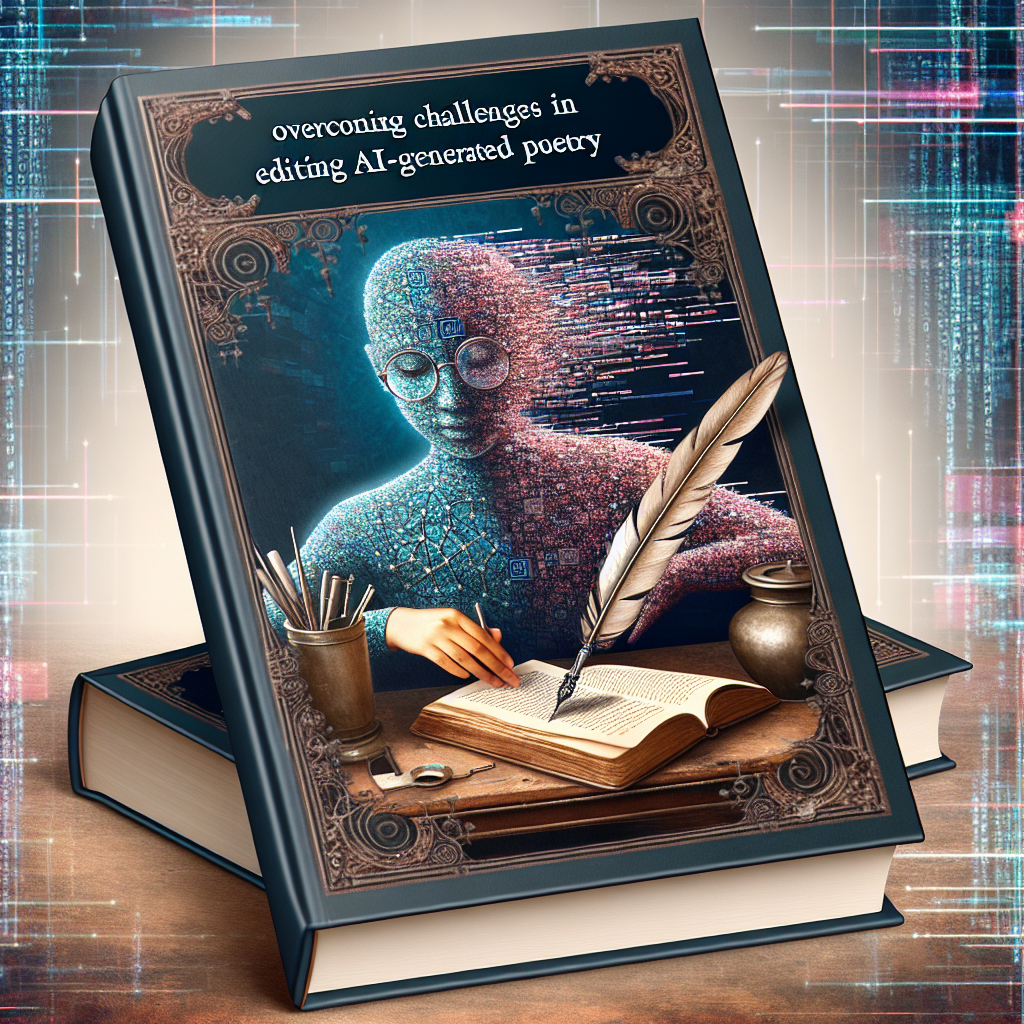How To Navigate AI-Generated Poetry Collections and Overcome the Obstacles to Editing them
Editing AI-generated poetry collections can be an arduous endeavor. Each collection poses its own set of unique challenges that necessitate taking an innovative approach when editing them. Here we explore some of these hurdles encountered when working with such collections as well as strategies for dealing with them effectively.
Understanding Challenges Facing Businesses Now
One of the primary challenges involved with editing AI-generated poetry collections is their lack of human emotion and creativity in each poem produced. AI algorithms may produce technically proficient pieces, yet lack depth and complexity which human poets bring to their work – which makes connecting to and understanding these poems on a deeper level challenging for editors.
AI-generated poetry collections often lack cohesion and consistency. Since AI algorithms process patterns and data to generate poems that lack clear narrative or thematic structure; editors may find it challenging to organize such collections so they flow smoothly with readers’ needs and resonate effectively with them.
AI-generated poetry collections may contain errors or inconsistencies that must be resolved, since AI algorithms do make mistakes; editors need to closely inspect these poems in order to ensure their accuracy and ensure any necessary corrections.
Strategies to Overcome Obstacles
One strategy for editing AI-generated poetry collections is enhancing their emotional depth and creativity. Editors can work to add layers of meaning, metaphors, and symbolism that resonates more strongly with readers; by infusing AI poetry with human emotion and creativity they can bridge the gap between AI poetry and traditional verse.
Create a cohesive narrative or thematic structure for a poetry collection is another strategy editors can employ in organizing their collection of poetry. Once identified, editors should review all poems for common motifs that can serve to unify and structure them into an immersive reading experience for readers. By setting clear narrative arcs or progressions between each of the poems they can help readers follow along easily resulting in more enjoyable reading sessions overall.
Editors must pay careful consideration to any inconsistencies or errors within AI-generated poetry collections, especially AI poetry collections created with software such as AI. By reviewing and editing each poem carefully, editors can ensure it is accurate, coherent, and error free; correcting grammar issues where necessary or rearranging lines to produce more polished poems can all contribute towards creating an improved final product.
Editing AI-generated poetry collections poses unique editing challenges that require editors to think creatively and critically. By emphasizing emotional depth, creating cohesive structures, addressing errors or inconsistencies and correcting any inconsistencies or discrepancies within these works of AI poetry collections editors can make AI poetry collections more captivating for readers while meeting these challenges with effective strategies and approaches that lead to captivating yet thought-provoking works of art.
